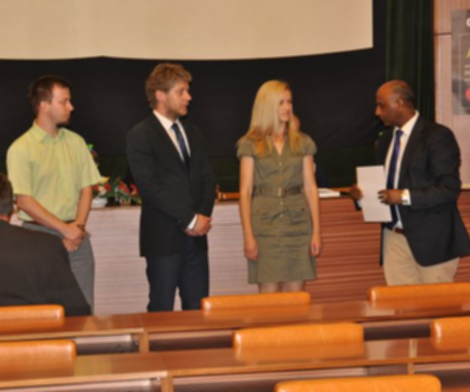13
JunEva Pšidová and PESP Research group has won awards of SAPV
Eva Pšidová and PESP Research group has won awards of SAPV: best scientific work in 2017 in the competition of young scientists in the field of agriculture and rural development in the field of forestry. The award ceremony took place on 29 May 2018 at the SAPV General Assembly in the congress hall of the National Agricultural and Food Center in Lužianky.
The topic of the submitted work was: Altitude of origin influences the responses of PSII photochemistry to heat waves in European beech (Fagus sylvatica L.). The photosynthetic responses to the combined effect of drought and heat stress were studied in leaves of 19-years-old European beech (Fagus sylvatica L.) trees originating from five provenances in Central Europe differing by altitude (55–1250 m), and grown in the same experimental plot. The results contribute to the recent knowledge on adaptation and acclimation mechanisms, which can be important for the mitigation of climate change effects on forest trees. Moreover, the approach based on parallel measurements of photosynthetic processes by different techniques has shown that the fast fluorescence measurements provide meaningful data indicating the specific photosynthetic responses of tree species to environmental factors. It supports the informative potential of the method to explain the physiological behavior of trees or to define the best forestry practices on and a physiological basis.
The work required a team approach and all co-authors participated in the output itself, through surface and plant material security, sampling, measurement and subsequent analysis of the data to the final version of the manuscript that was sent to the Environmental and Experimental Botany.
Namely awarded for work, she worked with Mrs. Ľubica Ditmarová, Director of the Institute of Ecology of SAS in Zvolen; with colleagues from the Slovak Agricultural University in Nitra from the Department of Plant Physiology: Marek Živčák and Marián Brestič; with Srdjan Stojnic and Saša Orlovic of the University of Novi Sad Institute of Lowland Forestry and Environment; with colleagues from the Technical University of Zvolen, Faculty of Forestry: Dušan Gömöry and Katarína Střelcová and Hazem M. Kalaji from the Institute of Technology and Life Sciences (ITP) from Poland.

